Nguyễn Công Phương
Sensors and Analytical Devices
Some Basic Measurement Methods, Temperature Measurement
Contents
A. Introduction B. Sensors Characteristics C. Some Basic Measurement Methods D. Measurement Systems
sites.google.com/site/ncpdhbkhn 2
Some Basic Measurement Methods
I. Sensor Technologies II. Temperature Measurement III. Pressure Measurement IV.Flow Measurement V. Level Measurement VI.Mass, Force, and Torque Measurement VII.Translational Motion, Vibration, and Shock
Measurement
VIII.Rotational Motion Transducers
sites.google.com/site/ncpdhbkhn 3
Temperature Measurement
Introduction
1. 2. Thermoelectric Effect Sensors (Thermocouples) 3. Varying Resistance Devices 4. Semiconductor Devices 5. Radiation Thermometers 6. Thermography (Thermal Imaging) 7. Thermal Expansion Methods 8. Quartz Thermometers 9. Fiber – Optic Temperature Sensors 10. Color Indicators 11. Change of State of Materials 12. Choice between Temperature Transducers
sites.google.com/site/ncpdhbkhn 4
Introduction
• Temperature measurement is very important in all aspects of life. In engineering applications, it is the most commonly measured • process variable.
• Difficulty: any given temperature cannot be related to a fundamental
standard of temperature.
• 10 classes of instrument based on 10 principles:
– Thermoelectric effect – Resistance change – Sensitivity of semiconductor device – Radiative heat emission – Thermography – Thermal expansion – Resonant frequency change – Sensitivity of fiber-optic devices – Color change – Change of state of materials
sites.google.com/site/ncpdhbkhn 5
Temperature Measurement
Introduction
1. 2. Thermoelectric Effect Sensors (Thermocouples) 3. Varying Resistance Devices 4. Semiconductor Devices 5. Radiation Thermometers 6. Thermography (Thermal Imaging) 7. Thermal Expansion Methods 8. Quartz Thermometers 9. Fiber – Optic Temperature Sensors 10. Color Indicators 11. Change of State of Materials 12. Choice between Temperature Transducers
sites.google.com/site/ncpdhbkhn 6
Thermoelectric Effect Sensors (1)
E
Metal 1
Metal 2
2
3
n
...
E a T a T 1
2
a T 3
a T n
1a T
Thermocouples
sites.google.com/site/ncpdhbkhn 7
Thermoelectric Effect Sensors (2)
hT
1E
2E
hT
1E
3E
2E
4E
hT
1E
3E
5E
sites.google.com/site/ncpdhbkhn 8
Thermoelectric Effect Sensors (3)
E
E
E
mE
mE
E 1
2
3
4
E 5
2E
4E
hT
1E
E
E
E
E
3E
5E
E 1
m
2
3
4
E 5
http://www.pcbheaven.com/wikipages /How_Thermocouples_Work/?p=1
E
E 1
m
sites.google.com/site/ncpdhbkhn 9
Thermoelectric Effect Sensors (4)
• Chromel – constantan (type E)
– Highest measurement sensitivity: 68 μV/oC – Inaccuracy: ±0.5% – Range: –200oC up to 900oC • Iron – constantan (type J) – Sensitivity: 55 μV/oC – Inaccuracy: ±0.75% – Range: –40oC up to 750oC • Copper – constantan (type T)
– Sensitivity: 43 μV/oC – Inaccuracy: ±0.75% – Range: –200oC up to 350oC
sites.google.com/site/ncpdhbkhn 10
Thermoelectric Effect Sensors (5)
• Chromel – alumel (type K)
– Highest measurement sensitivity: 41 μV/oC – Inaccuracy: ±0.75% – Range: –200oC up to 1300oC – Applications: 700oC up to 1200oC – Widely used, general – purpose
• Nicrosil – nisil (type N) – Sensitivity: 39 μV/oC – Inaccuracy: ±0.75% – Range: up to 1300oC – Long – term stability & life
• Nickel/molybdenum – nickel – cobalt
– One wire made from a nickel – molybdenum alloy with 18% molybdenum &
the other wire made from a nickel – cobalt alloy with 0.8% cobalt
– Range: up to 1400oC – Rarely used except for special applications such as temperatuer measurement in
vacuucm furnaces
sites.google.com/site/ncpdhbkhn 11
Thermoelectric Effect Sensors (6)
• Chromel – alumel (type K) – Sensitivity: 41 μV/oC – Inaccuracy: ±0.75% – Range: –200oC up to 1300oC – Applications: 700oC up to 1200oC – Widely used, general – purpose
• Nicrosil – nisil (type N) – Sensitivity: 39 μV/oC – Inaccuracy: ±0.75% – Range: up to 1300oC – Long – term stability & life
• Nickel/molybdenum – nickel – cobalt (type M)
– One wire made from a nickel – molybdenum alloy with 18% molybdenum
& the other wire made from a nickel – cobalt alloy with 0.8% cobalt
– Range: up to 1400oC – Rarely used except for special applications such as temperatuer
measurement in vacuucm furnaces
sites.google.com/site/ncpdhbkhn 12
Thermoelectric Effect Sensors (7)
Platinum (type B)
•
– One wire made from a platinum – rhodium alloy with 30% rhodium & the other wire made from a platinum –
rhodium alloy with 6% rhodium Sensitivity: 10 μV/oC – – Range: 50oC up to 1800oC
Platinum (type R)
•
– One wire made from pure platinum & the other wire made from a platinum – rhodium alloy with 13%
rhodium Sensitivity: 10 μV/oC – Inaccuracy: ±0.5% – – Range: 0 up to 1700oC
Platinum (type S)
•
– One wire made from pure platinum & the other wire made from a platinum – rhodium alloy with 10%
rhodium Sensitivity: 10 μV/oC – Inaccuracy: ±0.5% – – Range: 0 up to 1750oC
Tungsten (type C)
•
– One wire made from pure tungsten & the other wire made from a tungsten/rhenium alloy Sensitivity: 20 μV/oC – – Range: 0 up to 2300oC
Chromel – gold/iron
•
Sensitivity: 15 μV/oK
For very low temperature applications
– One wire made from chromel & the other wire made from a gold/iron alloy – – Range: from 1.2oK –
sites.google.com/site/ncpdhbkhn 13
Thermoelectric Effect Sensors (8)
• Manufactured by connecting together two
wires of different materials – Welding (the most common technique), or – Soldering, or – Twisting the wire ends together
• Diameter
– Between 0.4 & 2 mm (usually) – Some special case: 0.1 μm (for fast response time)
sites.google.com/site/ncpdhbkhn 14
Temperature Measurement
Introduction
1. 2. Thermoelectric Effect Sensors (Thermocouples) 3. Varying Resistance Devices 4. Semiconductor Devices 5. Radiation Thermometers 6. Thermography (Thermal Imaging) 7. Thermal Expansion Methods 8. Quartz Thermometers 9. Fiber – Optic Temperature Sensors 10. Color Indicators 11. Change of State of Materials 12. Choice between Temperature Transducers
sites.google.com/site/ncpdhbkhn 15
Varying Resistance Devices
• Rely on the physical principle of the variation
of resistance with temperature. • 2 types: resistance thermometers &
thermistors.
sites.google.com/site/ncpdhbkhn 16
Varying Resistance Devices, Resistance Thermometers (1)
• A.k.a. resistance temperature
devices.
• R = R0(1 + a1T + a2T2 + ... + anTn) • R ≈ R0(1 + a1T) • Platinum:
– The most linear characteristic & the
most commonly used.
– Inaccuracy: ±1.2%. – Very expensive
• Platinum thermometers are made in
3 forms: – A film deposited on a ceramic
substrate.
– A coil mounted inside a glass or
ceramic probe.
– A coil wound on a mandrel
sites.google.com/site/ncpdhbkhn 17
Varying Resistance Devices, Resistance Thermometers (2) • The nominal resistance (platinum) at 0oC is
typically 100 or 1000Ω. • Sensitivity (platinum): – 0.385Ω/oC (100Ω type) – 3.85Ω/oC (1000Ω type)
• The working range:
–270 to 1000oC –200 to 260oC –200 to 430oC –270 to 1100oC
– Platinum: – Copper: – Nickel: – tungsten:
sites.google.com/site/ncpdhbkhn 18
Varying Resistance Devices, Thermistors
• Made from beads of semiconductor material prepared from oxides of the iron group of metals (chromium, cobalt, iron, manganese, & nickel).
• Have a negative temperature coeficient, that is, resistance decreases as temperature increases:
(1/
T
)
1/
T 0
R R e
0 • Disadvantages: – Nonlinear – Low sensitivity
• Advantages: – Low cost – Small size
sites.google.com/site/ncpdhbkhn 19
Temperature Measurement
Introduction
1. 2. Thermoelectric Effect Sensors (Thermocouples) 3. Varying Resistance Devices 4. Semiconductor Devices 5. Radiation Thermometers 6. Thermography (Thermal Imaging) 7. Thermal Expansion Methods 8. Quartz Thermometers 9. Fiber – Optic Temperature Sensors 10. Color Indicators 11. Change of State of Materials 12. Choice between Temperature Transducers
sites.google.com/site/ncpdhbkhn 20
Semiconductor Devices
• Consist of either diodes or integrated circuit
transistors.
• Advantage: inexpensive. • Disadvantage: require and external power
supply to the sensor.
sites.google.com/site/ncpdhbkhn 21
Semiconductor Devices, Diodes • The forward voltage across the device varies
with temperature. • Output is in μA range. • Small size. • Good output linearity. • Inaccuracy: ±0.5%. • Silicon diodes: from –50 to 200oC. • Germanium diondes: from –270 to 40oC.
sites.google.com/site/ncpdhbkhn 22
Semiconductor Devices, Integrated Circuit Transistors • Produce an output proportional to the absolute
1μA/oK 10mV/oK
temperature: – Current: – Voltage: • Very low cost. • Good output linearity. • Inaccuracy: ±3%. • Range: from –50 to 150oC. • Widely used in monitoring pipes & cables.
sites.google.com/site/ncpdhbkhn 23
Temperature Measurement
Introduction
1. 2. Thermoelectric Effect Sensors (Thermocouples) 3. Varying Resistance Devices 4. Semiconductor Devices 5. Radiation Thermometers 6. Thermography (Thermal Imaging) 7. Thermal Expansion Methods 8. Quartz Thermometers 9. Fiber – Optic Temperature Sensors 10. Color Indicators 11. Change of State of Materials 12. Choice between Temperature Transducers
sites.google.com/site/ncpdhbkhn 24
Radiation Thermometers (1)
• A.k.a. radiation pyrometers. • All objects emit electromagnetic radiation as a function of their temperature above absolute zero.
• Radiation thermometers
measure this radiation in order to calculate the temperature of the object.
• The total rate of radiation
emission per second is: E = KT4
sites.google.com/site/ncpdhbkhn 25
Radiation Thermometers (2)
• Range: –100 to 10,000oC. Inaccuracy: ±0.05%. • • Versions: portable, battery – powered, hand-held. • Easy to use. • The important advantage: there is no contact between the hot body
& the meter, hence: – The measured system is not disturbed. – No possibility of contamination (important in food, drug, etc). – Suitable for measuring high temperatures. – Capable of measuring moving bodies.
• The use of radiation thermometers is complicated due to the
absorption & scattering of the energy between the emitting body & the radiation detector – Absorption: by carbon dioxide, ozone, water vapor molecules. – Scattering: by atmospheric dust & water droplets.
• Types: optical & radiation pyrometers.
sites.google.com/site/ncpdhbkhn 26
Radiation Thermometers, Optical Pyrometer
• To measure temperatures above 600oC (up to 10,000oC). • Contains a heated tungsten filement within its optical system. • The current in the filament is increased until its color is the same as
the hot body (the filament disappears).
• Temperature measurement is obtained in terms of the current
flowing in the filament.
• Can not be used in automatic systems because of the human eye.
http://www.machineryspaces.com /temperature-measurement.html
sites.google.com/site/ncpdhbkhn 27
Radiation Thermometers, Radiation Pyrometers
Detector
Light from hot body
• A detector, not eye. • Range: from –100 to 3600oC. • Detector: a thermal detector, or a photon detector. • Thermal detectors:
– Respond equally to all wavelengths in the frequency spectrum – Consist of resistaces thermometers & thermistors – Time constant: several miliseconds
• Photon detectors:
– Respond selectively to a particular band within the full spectrum – Consist of photoconductive or photovoltaic type – Time constant: a few microseconds
sites.google.com/site/ncpdhbkhn 28
Temperature Measurement
Introduction
1. 2. Thermoelectric Effect Sensors (Thermocouples) 3. Varying Resistance Devices 4. Semiconductor Devices 5. Radiation Thermometers 6. Thermography (Thermal Imaging) 7. Thermal Expansion Methods 8. Quartz Thermometers 9. Fiber – Optic Temperature Sensors 10. Color Indicators 11. Change of State of Materials 12. Choice between Temperature Transducers
sites.google.com/site/ncpdhbkhn 29
Thermography
Control Control unit unit
Processor Processor
Display Display unit unit
Scanning Scanning radiation radiation detector detector
• A.k.a. thermal imaging. • Scan an infrared radiation detector
across an object.
• The output is in the form of the
temperature distribution. • Range: –20oC up to 1500oC. • Radiation detector: the same principles of operation as a radiation pyrometer.
http://www.thermalvisionresearch.co.uk/thermography-for-the-detection-of-raynauds-disease/cst-bilat-hyperaemia-example/ sites.google.com/site/ncpdhbkhn 30
Temperature Measurement
Introduction
1. 2. Thermoelectric Effect Sensors (Thermocouples) 3. Varying Resistance Devices 4. Semiconductor Devices 5. Radiation Thermometers 6. Thermography (Thermal Imaging) 7. Thermal Expansion Methods
a) Liquid-in-Glass Thermometers b) Bimetallic Thermometer c) Pressure Thermometers
8. Quartz Thermometers 9. Fiber – Optic Temperature Sensors 10. Color Indicators 11. Change of State of Materials 12. Choice between Temperature Transducers
sites.google.com/site/ncpdhbkhn 31
Liquid-in-Glass Thermometers
• A well – known temperature – measuring
instrument used in a wide range of applications.
• The fluid is normally either mercury or
colored alcohol, contained within a bulb & capillary tube.
• As the temperature rises, the fluid expands
along the capillary tube & the level is read.
• Range: –200 to 1000oC. • Inaccuracy: ±0.15%.
sites.google.com/site/ncpdhbkhn 32
Bimetallic Thermometer
• Based on the fact that if two strips of different metals are bonded together, any temperature change will cause the strip to bend. • In the bimetallic thermostat,
it is used as a switch.
• If the magnitude of bending
is measured, it is a thermometer.
• Range: –75 to 1500oC. • Inaccuracy: ±0.5%.
http://www.daviddarling.info/encyclopedia/B/ bimetallic_strip.html
sites.google.com/site/ncpdhbkhn 33
Pressure Thermometers
• Consist of a stainless-steel bulb
containing a liquid or gas.
• Temperature rises will cause the fluid’s pressure increases (not its volume, because the fluid is constrained). • The change in pressure of the fluid is
measured by a suitable pressure transducer (such as the Bourdon tube).
http://image.china- ogpe.com/newsimages/ Pressure_type_thermo meter_2_glossary-1.gif
• Range: –250 up to 2000oC. • Inaccuracy: ±0.5%. • A particulary long time constant.
Bourdon tube
sites.google.com/site/ncpdhbkhn 34
Temperature Measurement
Introduction
1. 2. Thermoelectric Effect Sensors (Thermocouples) 3. Varying Resistance Devices 4. Semiconductor Devices 5. Radiation Thermometers 6. Thermography (Thermal Imaging) 7. Thermal Expansion Methods 8. Quartz Thermometers 9. Fiber – Optic Temperature Sensors 10. Color Indicators 11. Change of State of Materials 12. Choice between Temperature Transducers
sites.google.com/site/ncpdhbkhn 35
Quartz Thermometers
• Make use of the principle that the resonant frequency of a material such as quartz is a function of temperature.
• Temperature changes are translated into frequency
change.
• Measurement of the oscillator frequency allows the
measured temperature to be calculated. • Have a very linear output characteristic. • Range: –40 up to 230oC. • Inaccuracy: ±0.1%. • Resolution: 0.0003oC!!! • Very expensive.
sites.google.com/site/ncpdhbkhn 36
Temperature Measurement
Introduction
1. 2. Thermoelectric Effect Sensors (Thermocouples) 3. Varying Resistance Devices 4. Semiconductor Devices 5. Radiation Thermometers 6. Thermography (Thermal Imaging) 7. Thermal Expansion Methods 8. Quartz Thermometers 9. Fiber – Optic Temperature Sensors 10. Color Indicators 11. Change of State of Materials 12. Choice between Temperature Transducers
sites.google.com/site/ncpdhbkhn 37
Fiber – Optic Temperature Sensors • Fiber – optic can be used as either intrinsic or
extrinsic temperature sensors.
• Range: 250 up to 3000oC. • Inaccuracy: ±1.0%. • Applications:
– Measuring temperatures in hard-to-reach locations. – Very high measurement accuracy is required.
sites.google.com/site/ncpdhbkhn 38
Temperature Measurement
Introduction
1. 2. Thermoelectric Effect Sensors (Thermocouples) 3. Varying Resistance Devices 4. Semiconductor Devices 5. Radiation Thermometers 6. Thermography (Thermal Imaging) 7. Thermal Expansion Methods 8. Quartz Thermometers 9. Fiber – Optic Temperature Sensors 10. Color Indicators 11. Change of State of Materials 12. Choice between Temperature Transducers
sites.google.com/site/ncpdhbkhn 39
Color Indicators
• The color of various substances & objects changes as a
function of temperature.
• One use of this is in the optical pyrometer (discussed). • The other main use is in special color indicators, widely used in industry to determine whether objects placed in furnaces have reached the required temperature. • Such color indicators consist of special paints or
crayons that are applied to an object before it is placed in a furnace.
• At a certain temperature, a chemical reaction takes
place & a permanent color change occurs in the paint or crayon.
sites.google.com/site/ncpdhbkhn 40
Temperature Measurement
Introduction
1. 2. Thermoelectric Effect Sensors (Thermocouples) 3. Varying Resistance Devices 4. Semiconductor Devices 5. Radiation Thermometers 6. Thermography (Thermal Imaging) 7. Thermal Expansion Methods 8. Quartz Thermometers 9. Fiber – Optic Temperature Sensors 10. Color Indicators 11. Change of State of Materials 12. Choice between Temperature Transducers
sites.google.com/site/ncpdhbkhn 41
Change of State of Materials
• Seger cones or pyrometric
cones.
• Used commonly in the ceramics industry.
• Consist of a fused oxide &
glass material that is formed into a cone shape. • The tip of the cone softens
& bends over when a particular temperature is reached.
• Range: 600 up to 2000oC.
http://en.wikipedia.org/wiki/ File:Segerkegel.jpg
http://digitalfire.com/4sight/education/ interpreting_orton_cones_193.html sites.google.com/site/ncpdhbkhn 42
Temperature Measurement
Introduction
1. 2. Thermoelectric Effect Sensors (Thermocouples) 3. Varying Resistance Devices 4. Semiconductor Devices 5. Radiation Thermometers 6. Thermography (Thermal Imaging) 7. Thermal Expansion Methods 8. Quartz Thermometers 9. Fiber – Optic Temperature Sensors 10. Color Indicators 11. Change of State of Materials 12. Choice between Temperature Transducers
sites.google.com/site/ncpdhbkhn 43
Choice between Temperature Transducers (1)
• Depends substantially on whether the medium to be
measured is a solid or a fluid. – Solid:
• It is essential that good contact is made between the body & the
transducers (unless a radiation thermometer)
• thermocouples, resistance thermometers, thermistors,
semiconductor devices, & color indicators
– Fluid: any
• The most commonly used device in industry for
temperature measurement is the base metal thermocoupe. – Relatively inexpensive – Inaccuracy: ±0.5% – Range: –250 to 1200oC – Low-level output voltage prone to noise unsuitable for
measuring small temperature differences.
sites.google.com/site/ncpdhbkhn 44
Choice between Temperature Transducers (2)
• Resistance thermometers – Also commonly used – Range: –270 to 650oC (smaller than thermocouples) – Inaccuracy: ±0.5% – More stable (compared to thermocouples) & can
measure small temperature differences
• Thermistors
– Also commonly used – Small & inexpensive – Fast output response to temperature changes – Good measurement sensitivity – Range is quite limited
sites.google.com/site/ncpdhbkhn 45
Choice between Temperature Transducers (3)
• Semiconductors devices
– Have a better linearity than thermocouples & resistance
thermometers
– A similar level of accuracy – Integrated circuit transistor sensors: particularly inexpensive, but poor accuracy & limited range
– Diode sensors: much more accurated, wider range, more
expensive
• Radiation thermometers
– Major importance: noncontacat, noninvasive mode of
measurement
– Expensive – Able to measure fast temperature transients of duration as
small as 10μs
sites.google.com/site/ncpdhbkhn 46
Choice between Temperature Transducers (4)
• Thermal expansion
– Used mainly as temperature-indicating devices rather than as components within automatic control systems
– The bimetallic thermometer is more rugged than
liquid-in-glass types but less accurate
• Fiber-optic devices
– More expensive than most other forms of temperature
sensors
– A means of measuring temperature in very inaccessible
locations – Up to 3600oC
sites.google.com/site/ncpdhbkhn 47
Choice between Temperature Transducers (5)
• Quartz thermometer – Very high resolution – Expensive (the complex electronics required to analyze the frequency-change form of output)
– Limited range, low inaccurac
• Color indicators
– Used widely to determine when objects in furnaces
have reached the required temperature
– Work well if the rate of rise of temperature of the
object in the furnace is relatively slow
– Inexpensive
sites.google.com/site/ncpdhbkhn 48








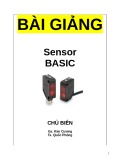
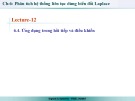

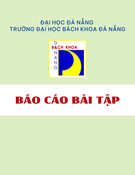


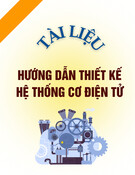


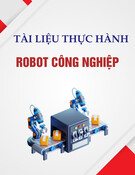




![Bài giảng Kỹ thuật robot [Mới nhất]](https://cdn.tailieu.vn/images/document/thumbnail/2025/20250715/vijiraiya/135x160/366_bai-giang-ky-thuat-robot.jpg)
![Câu hỏi ôn tập Cơ sở xử lý ảnh số [năm] chuẩn nhất](https://cdn.tailieu.vn/images/document/thumbnail/2025/20250710/kimphuong1001/135x160/84701752136985.jpg)

![Câu hỏi ôn tập Robot công nghiệp [năm hiện tại]](https://cdn.tailieu.vn/images/document/thumbnail/2025/20250702/kimphuong555/135x160/7711751422232.jpg)
